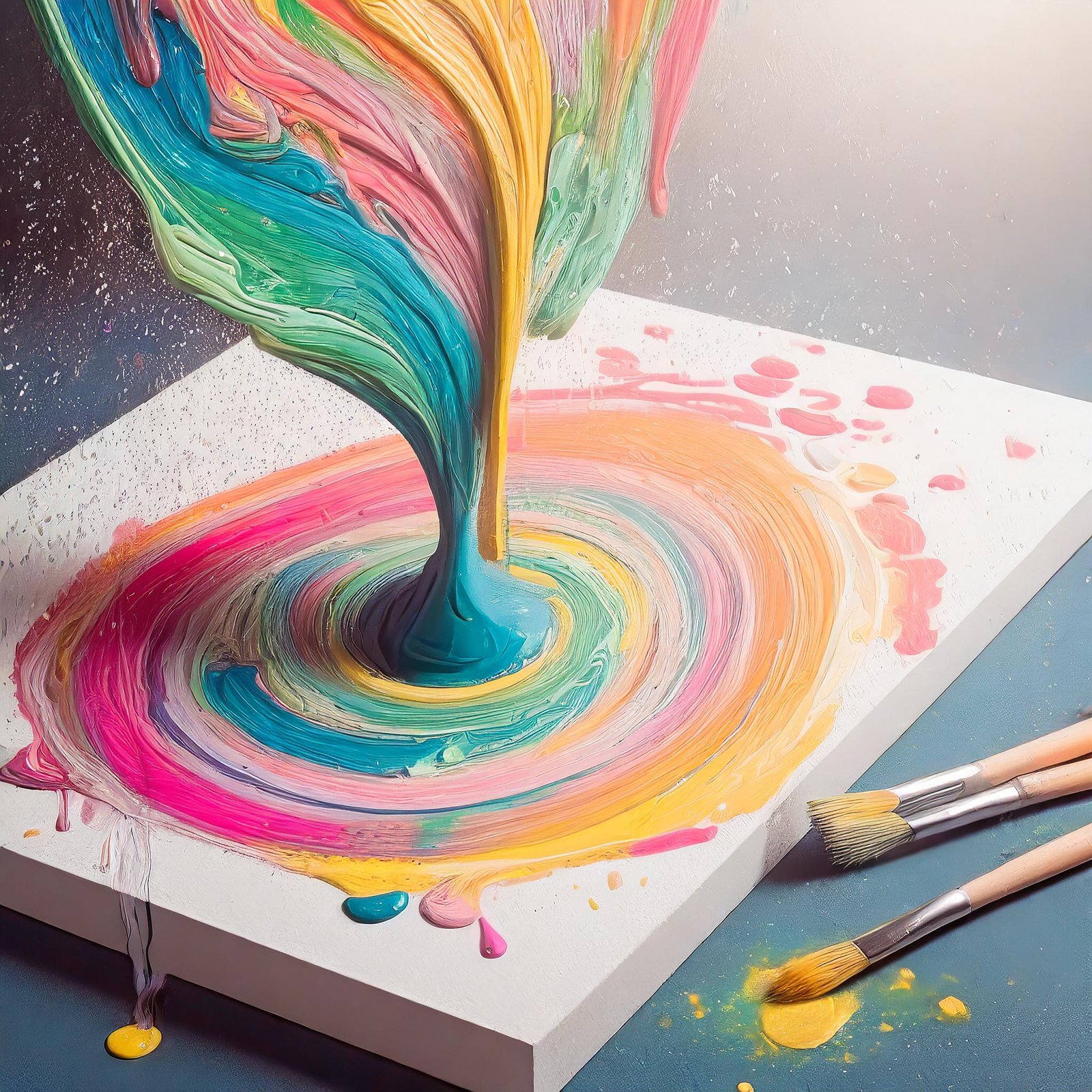The Ultimate Guide to Acrylic Paint Pouring: Techniques, Tips, and Mesmerizing Results
Paint pouring is an art form that has captivated artists and hobbyists alike, offering a gateway to creativity with its fluid patterns and vibrant colors. This guide delves into the world of acrylic pouring, equipping you with the knowledge to embark on this mesmerizing art journey.This is a brand new site about paint pouring and fluid art. There will be plenty more posts coming soon, so stay tuned!
Acrylic paint pouring is a captivating art form that offers a gateway to creativity through fluid patterns and vibrant colors. This guide equips you with the knowledge to embark on this mesmerizing art journey. With its simplicity and unique outcomes, acrylic pouring allows for experimentation and encourages creativity. To get started, you’ll need acrylic paints, pouring medium, mixing cups, protective gloves, canvas or substrates, and a clean, flat work surface. Enjoy the adventure of acrylic paint pouring and unleash your artistic expression!
Acrylic paint pouring is an immersive art form that captivates artists and hobbyists alike. With its fluid patterns and vibrant colors, it offers a gateway to creative expression. This guide equips you with the necessary knowledge to embark on this mesmerizing art journey. Get ready to explore the world of acrylic pouring and unleash your creativity!
Acrylic paint pouring is a captivating art form that offers a gateway to creativity through its fluid patterns and vibrant colors. This guide provides the necessary knowledge to embark on this mesmerizing art journey. Acrylic pouring allows for an immersive experience, where artists can express themselves without the need for brushes. With its simplicity and unique outcomes, acrylic pouring encourages experimentation and creativity. To get started, you’ll need acrylic paints, pouring medium, mixing cups and sticks, protective gloves, a canvas or substrate, and a clean, flat work surface.
The Basics of Color Theory in Pouring
Understanding color theory is crucial in acrylic pouring. Knowing which colors blend well together and which combinations to avoid can make the difference between a muddy mess and a vibrant masterpiece.
Preparing Your Paint
Mixing Paint with Pouring Medium
The pouring medium is the secret ingredient that transforms acrylic paint from a thick paste to a fluid that flows. It not only helps in achieving the right consistency but also enhances the paint’s vibrancy and drying time.
Achieving the Perfect Consistency
The consistency of your paint can greatly affect the outcome of your pour. Too thick, and it won’t flow; too thin, and the colors may blend too much or become transparent. Aiming for a honey-like consistency is a good rule of thumb.
Color Selection and Combination
Choosing colors for your pour is part art, part science. Consider complementary colors for contrast, analogous colors for harmony, or experiment with your own combinations for unique effects.
Pouring Techniques
The Flip Cup
The flip cup method involves layering different colors in a cup, then flipping it onto the canvas and lifting it to allow the paint to flow and blend on the surface.
The Swipe Technique
In the swipe technique, colors are poured onto the canvas, and then a tool is used to swipe over the top layer, creating cells and lacingeffects that add depth and character to the pour.
The Dirty Pour
The dirty pour is a technique where multiple colors are mixed in a single cup before being poured onto the canvas. This method allows for more control over the color blending and can result in stunning, intricate patterns.
The Puddle Pour
Puddle pouring involves pouring individual colors in the form of puddles on the canvas, and then tilting the canvas to move and blend the paints. This technique can create soft, flowing patterns with distinct areas of color.
Get the complete guide by clicking on the link under this
.
👉The Ultimate Guide to Acrylic Paint Pouring👈

